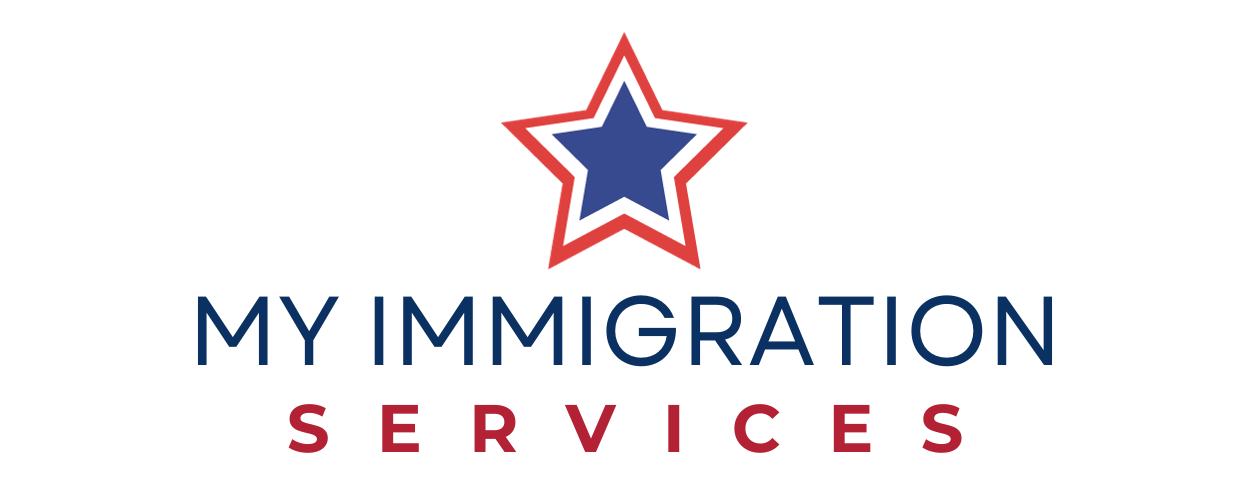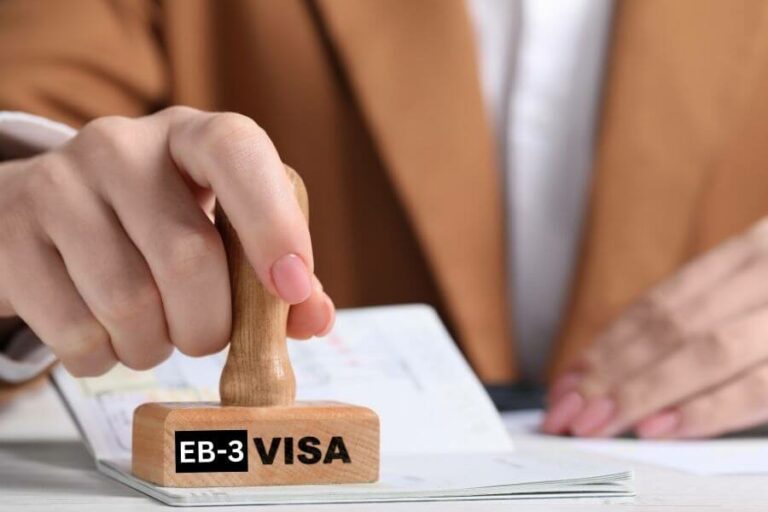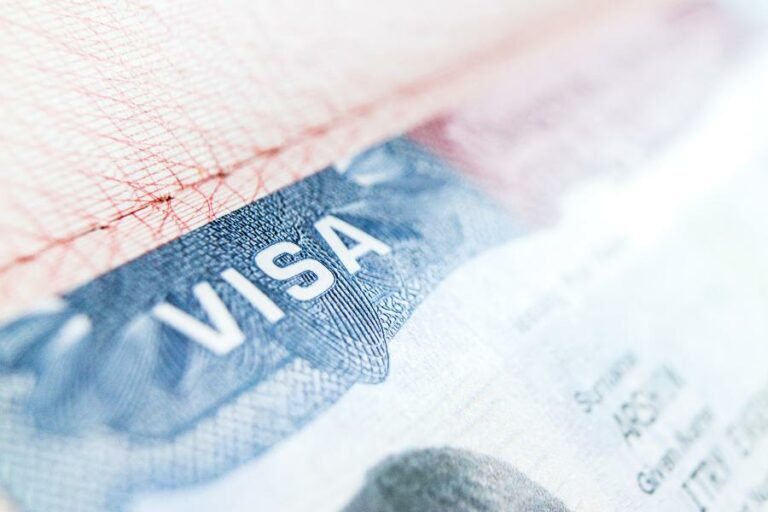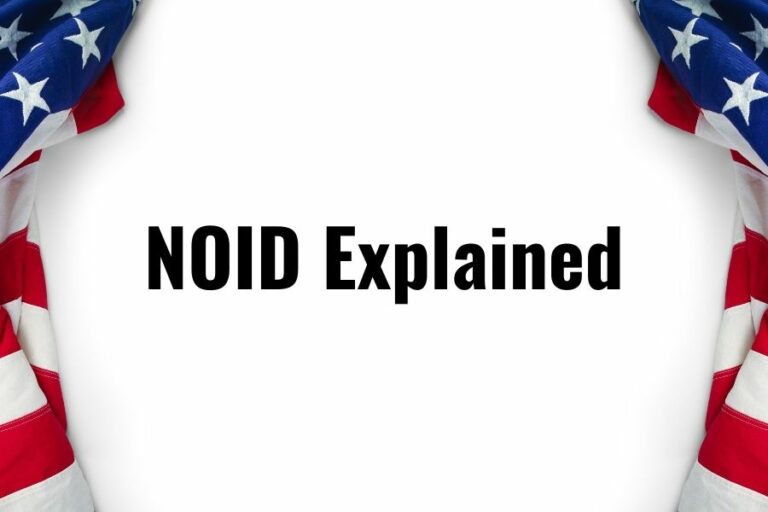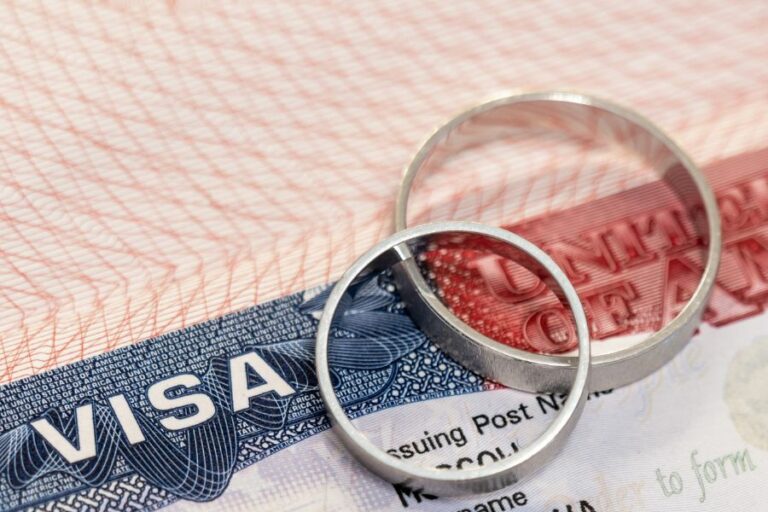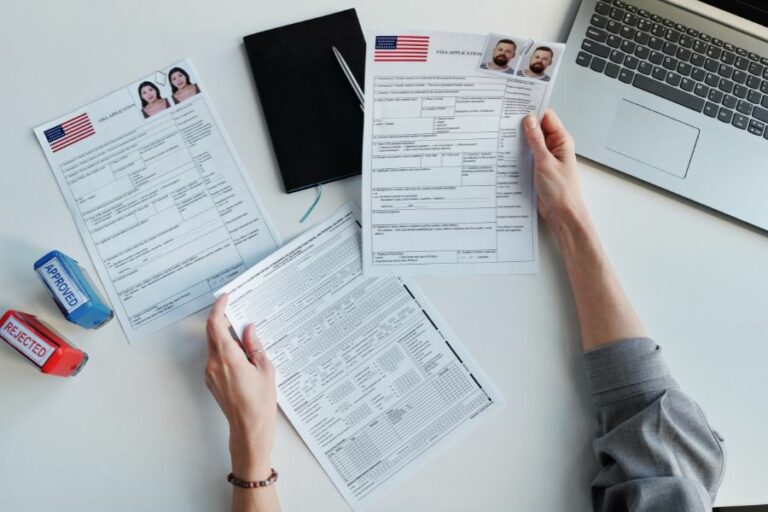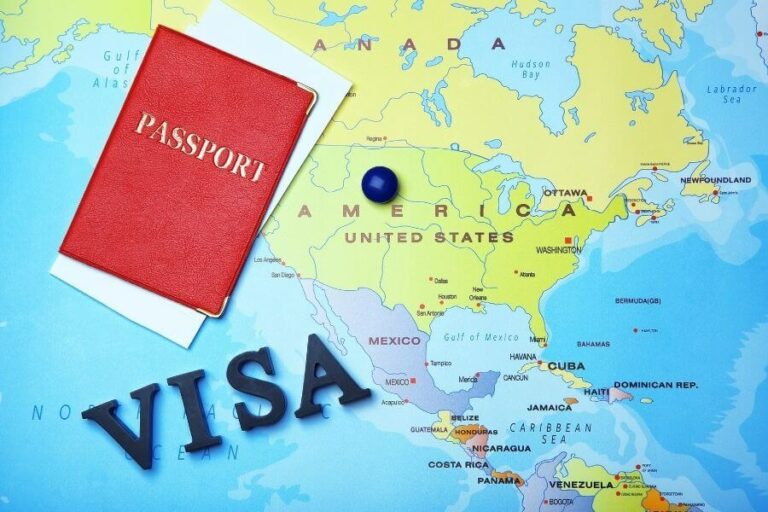EB-1 Visa: Everything You Need To Know
The EB-1 visa stands as one of the most prestigious U.S. employment-based visas available to foreign nationals. Specifically designed to attract a select group of individuals, this visa type offers a fast track to obtaining a green card and permanently residing in the United States.
Aimed at recognizing those at the zenith of their professions, the EB-1 category is divided into three subcategories:
- Those with extraordinary ability in arts, sciences, business, athletics, or education.
- Outstanding professors and researchers.
- Multinational executives or managers.
Its rigorous criteria ensure that only the best candidates are awarded this visa. However, the benefits it offers, like priority in green card processing, make it a sought-after option for many.
In this article, we will detail its specifications, requirements, and the opportunities it presents for those aspiring to make the U.S. their permanent residence.
What is the EB-1 Visa?
The EB-1 Visa is the “first preference” category of employment-based immigration visas available in the U.S. As the name suggests, it is designed to give top priority to individuals who have achieved substantial accomplishments in their respective fields, such as extraordinary ability professionals, outstanding professors/researchers, and certain multinational managers or executives.
Given its first preference status, EB-1 Visa applicants often experience faster processing times and fewer delays compared to other employment-based categories. This makes it a particularly appealing option for those who qualify, as it offers a relatively swift pathway to U.S. permanent residency.
After a certain point that the applicant has held the EB-1 visa without any problems, they can also apply for US citizenship.
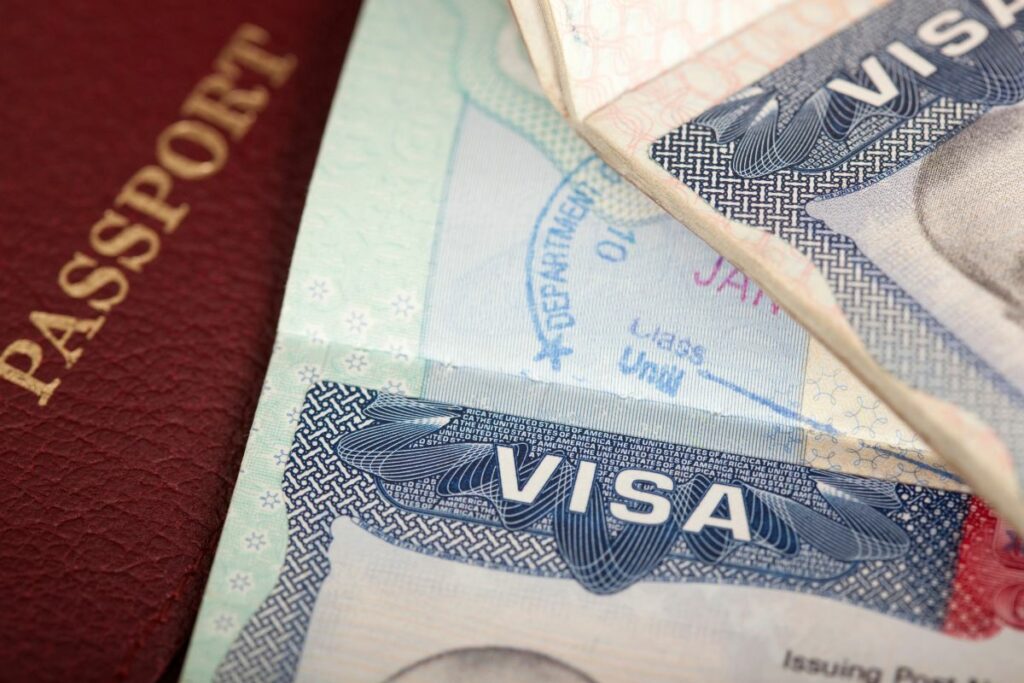
EB-1 Visa Categories: Who can apply?
The EB-1 Visa is divided into three specific categories:
1. Extraordinary Ability (EB-1A):
This category is for foreign nationals who have demonstrated extraordinary ability in their fields, such as sciences, arts, education, business, or athletics. Qualification typically requires substantial evidence like major awards (e.g., Nobel Prize, Oscar) or a strong combination of other significant achievements and recognitions, as they do not need an employment offer to apply for the EB-1 visa.
2. Outstanding Professors and Researchers (EB-1B):
This category caters to professors and researchers who are recognized internationally for their outstanding contributions in a specific academic field. They should have at least three years of experience in teaching or research in that academic area and be entering the U.S. to continue advancing their field in a research or teaching position in a university.
3. Multinational Managers or Executives (EB-1-C):
Designed for executives or managers who have worked for a company outside of the U.S. for at least one of the last three years and are transferring to a related company within the U.S. The role in the U.S. must be of a managerial or executive capacity.
Each of these categories has its own specific criteria and set of documentation required to prove eligibility. However, all are aimed at recognizing and offering residency to individuals at the top of their respective professions or roles.

EB-1 Visa Eligibility Criteria
Extraordinary Ability (EB-1A):
Evidence of a major, internationally recognized award, such as a Nobel Prize or Olympic Medal, OR meet at least 3 of the following criteria:
- Receipt of lesser nationally or internationally recognized prizes or awards for excellence in the field.
- Membership in associations in the field which demand outstanding achievement of their members.
- Published material about the individual in professional or major trade publications or major media.
- Participation as a judge (individually or on a panel) evaluating the work of others in the same or related field.
- Original contributions of major significance to the field.
- Authorship of scholarly articles in the field, in professional journals, or other major media.
- Display of the individual’s work at artistic exhibitions or showcases.
- Performance in a leading or critical role for distinguished organizations or establishments.
- High salary or remuneration in comparison to others in the field.
- Commercial success in the performing arts, as shown by box office receipts or record, cassette, CD, or video sales.
Outstanding Professors and Researchers (EB-1B):
- Must demonstrate international recognition for outstanding achievements in their academic field.
- Have at least 3 years of experience in teaching or research in that academic area.
Seek to enter the U.S. for:
- A tenure or tenure-track position within a university or other institution of higher education to teach in the academic area.
- A comparable position with a university or institution to conduct research.
- A comparable position to conduct research with a private employer if the employer employs at least three full-time researchers and has achieved documented accomplishments in the research field.
Must meet at least 2 of the following criteria:
- Receipt of major awards or prizes for outstanding achievement.
- Membership in associations that require their members to demonstrate outstanding achievement.
- Published material in professional publications written by others about the individual’s work in the academic field.
- Participation, either on a panel or individually, as a judge of the work of others in the same or related academic field.
- Original scientific or scholarly research contributions to the field.
- Authorship of scholarly books or articles (in scholarly journals with international circulation) in the field.
Multinational Managers or Executives (EB-1C):
- Must have been employed outside the U.S. for at least 1 of the last 3 years by a firm, corporation, or other legal entity or by its affiliate or subsidiary.
- Seeking to enter the U.S. to continue serving that firm or organization in a managerial or executive capacity.
- The qualifying relationship between the foreign employer and the U.S. employer (e.g., they are the same employer, or a parent, affiliate, or subsidiary).
- The U.S. employer must have been in business for at least 1 year.
For all categories, individuals must have a job offer from a U.S. employer and the employer must file an immigrant petition (Form I-140) on the individual’s behalf, except for those applying under the Extraordinary Ability category. They can self-petition, meaning they can file the I-140 on their own behalf.
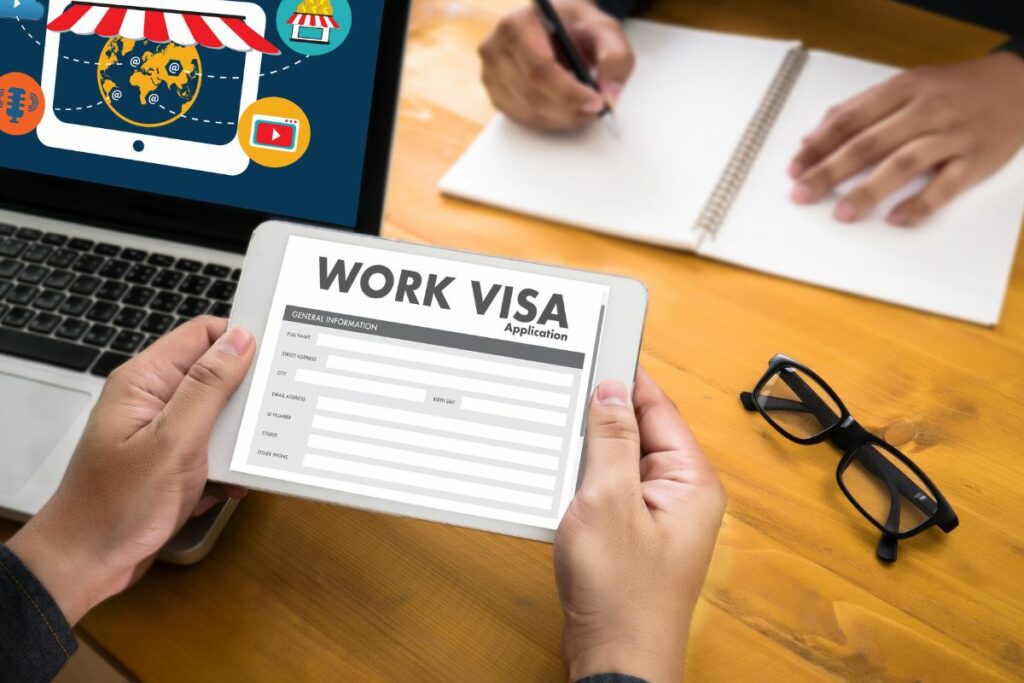
How to apply for an EB-1 visa
Applying for the EB-1 Visa involves a series of steps, both for the applicant and their sponsoring U.S. employer (if applicable). Here’s a guide:
1. Determine Eligibility:
Before starting the application process, ensure that you meet the eligibility criteria for one of the three EB-1 categories: Extraordinary Ability (EB-1A), Outstanding Professors and Researchers (EB-1B), or Multinational Managers or Executives (EB-1C).
2. Immigrant Petition (Form I-140):
- For EB-1A (Extraordinary Ability): Individuals can self-petition, which means they can file the I-140 form on their own behalf. This is beneficial for those without a specific U.S. employer but who intend to work in their field of expertise.
- For EB-1B and EB-1C: The U.S. employer must file Form I-140, Petition for Alien Worker, with U.S. Citizenship and Immigration Services (USCIS) on behalf of the individual.
During this stage, substantial evidence must be submitted to demonstrate the applicant’s eligibility based on their category’s criteria.
3. Wait for Decision on I-140:
USCIS will review the petition and either approve or deny it. If denied, USCIS will provide reasons for the denial, and there may be options to appeal or file a motion.
4. Check Visa Availability:
The U.S. has annual limits on the number of green cards it issues. However, EB-1 visas are high-priority, so they often have visas readily available. Check the U.S. Department of State’s Visa Bulletin to see if a visa number is available for your category.
5. Apply for an Adjustment of Status (If Already in the U.S.):
If the applicant is already in the U.S. on a different visa, they can apply for an adjustment of status to permanent resident using Form I-485.
Once USCIS receives the form, they may schedule a biometrics appointment and, later, an interview.
6. Consular Processing (If Outside the U.S.):
If the applicant is outside the U.S., they will undergo consular processing. Upon I-140 approval and visa availability, the case will be forwarded to the National Visa Center (NVC) and subsequently to a U.S. embassy or consulate in the applicant’s home country.
The applicant will be scheduled for a visa interview. If approved, they will receive an immigrant visa to enter the U.S. Upon entry, they will be a permanent resident.
7. Receive Your Green Card:
Whether you adjust status or undergo consular processing, the final step is receiving your physical green card. This card certifies you as a lawful permanent resident of the U.S., allowing you to live and work permanently in the country.
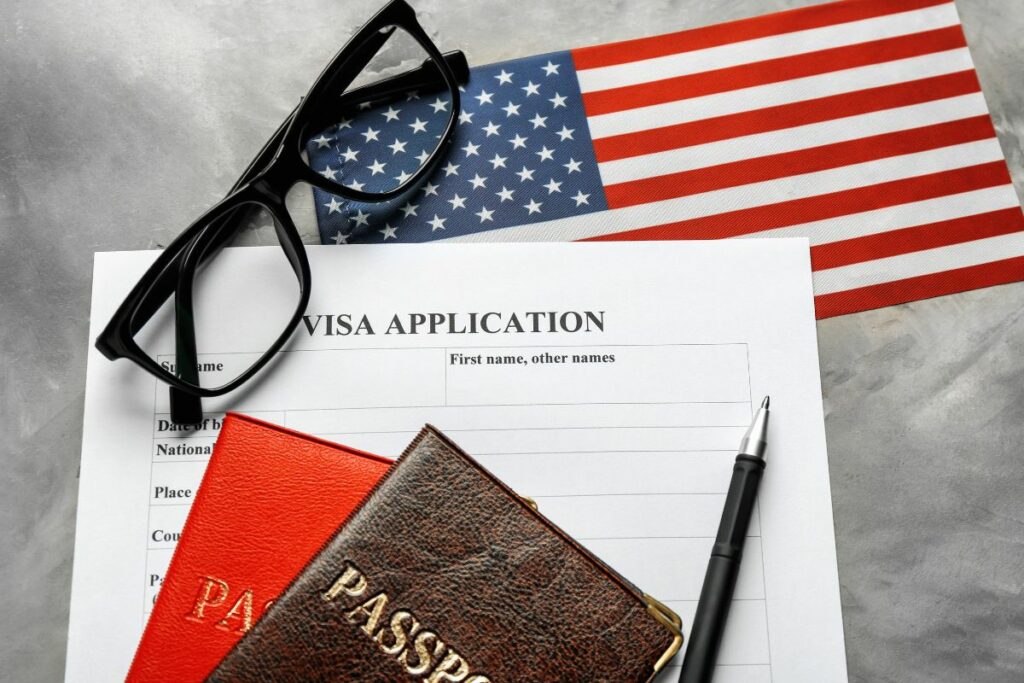
What evidence does USCIS request for the EB1 visa?
For the EB-1 Visa, the U.S. Citizenship and Immigration Services (USCIS) requires specific evidence based on the EB-1 subcategory you are applying under:
1. EB-1A (Extraordinary Ability):
Proof of a major, internationally recognized award, such as a Nobel Prize or Olympic Medal, OR at least 3 of the following:
- Lesser national or international prizes or awards for excellence.
- Membership in associations requiring outstanding achievements.
- Published material about the applicant in professional publications or major media.
- Judging others’ work, either individually or on a panel.
- Original significant contributions to a field.
- Authorship of scholarly articles in major publications.
- Work showcased at major artistic exhibitions or showcases.
- Leading or critical role in distinguished organizations.
- High salary or remuneration in relation to peers.
- Commercial success in the arts, measured by ticket sales or other metrics.
2. EB-1B (Outstanding Professors and Researchers):
International recognition for being outstanding in a specific academic field.
At least 3 of the following:
- Major prizes or awards for outstanding achievement.
- Membership in associations requiring outstanding achievements.
- Published material about the applicant’s work.
- Participation in judging the work of others in the same or an allied field.
- Original scientific or scholarly contributions in the field.
- Authorship of scholarly books or articles in scholarly journals with international circulation.
3. EB-1C (Multinational Managers or Executives):
- Documentation to establish the managerial or executive role of the applicant in the foreign company and intended role in the U.S. company.
- Proof of the qualifying relationship between the U.S. and foreign employer (such as a parent, branch, subsidiary, or affiliate).
- Evidence that the U.S. employer has been in business for at least one year.
While the above lists the general evidence and criteria, the specific documentation and proofs will depend on the individual’s circumstances. USCIS may also issue Requests for Evidence (RFE) if they feel further documentation is needed. Given the complexity and the high standards of proof, applicants often seek guidance from immigration attorneys to ensure the most compelling case.
How to submit the evidence for an EB-1 visa?
When applying for the EB-1 Visa, the applicant must present evidence to USCIS in a clear, organized, and compelling manner. Here’s a general guideline on how the evidence should be presented:
- Well-Organized Petition Package: Use tabs or dividers to separate different sections of evidence. Include a table of contents to help USCIS officers navigate the package easily.
- Cover Letter or Petition Letter: Begin the package with a detailed cover or petition letter that provides an overview of the applicant’s qualifications and enumerates the specific pieces of evidence enclosed. This letter often outlines how the applicant meets the required criteria for the EB-1 category they are applying under.
- Primary Evidence: Highlight major awards, like internationally recognized accolades, upfront. For those relying on alternative criteria (such as in the EB-1A category where you can qualify based on meeting at least three of ten criteria), clearly label and provide evidence for each criterion you aim to satisfy.
- Letters of Recommendation or Expert Opinions: Obtain letters from recognized experts in the applicant’s field. These letters should detail the applicant’s contributions, achievements, and standing in the field. The letters should be on official letterhead, be signed, and include the credentials of the expert writing the recommendation, explaining why they are qualified to evaluate the applicant’s work.
- Supporting Documentation: This could include published articles, media coverage, evidence of commercial successes, proof of performance in leading/critical roles, and so forth. Ensure that publications, articles, or any written evidence are accompanied by translations if they are not in English.
- Visual Evidence: If presenting evidence like videos, audio recordings, or images (especially relevant for artists, performers, or certain scientists), ensure they are clearly labeled, and provide a brief description or context for each piece.
- Verification of Employment: For categories like EB-1B and EB-1C, provide employment verification letters, contracts, or other official documentation that verifies the applicant’s employment history, roles, and responsibilities.
- Chronological Order: Whenever possible, organize evidence in chronological order, especially when presenting career timelines, publications, or other achievements.
- Clear Copies: Ensure that all documentation is clear and legible. If sending copies, it’s recommended to retain the original documents as USCIS might request them.
- Avoid Excessive or Redundant Information: While it’s crucial to be thorough, avoid overwhelming the application with redundant or irrelevant information. Aim for quality and relevance over sheer volume.
EB-1 Visa Costs
The costs associated with the EB-1 Visa application can vary based on individual circumstances, the type of EB-1 subcategory, and other factors. Here are the main costs to consider:
| Form | Filing Fee |
|---|---|
| Form I-140 | $700 |
| Form I-485 (only needed if applying within the U.S. / Application to Register Permanent Residence or Adjust Status) | Adults (ages 14-78): $1,140 Children (under 14 with at least one parent): $750 Applicants age 79+: $1,120 |
| Biometrics Fee (if required) | $85 |
| Form DS-260 (After I-140 approval) | $325 |
| Medical Examination Costs | Varies by location and medical provider |
EB1 Visa Processing Times
The processing time for the EB-1 Visa can vary based on several factors, including the specific EB-1 subcategory, the applicant’s country of origin, the service center handling the petition, and current backlogs or delays with U.S. Citizenship and Immigration Services (USCIS) or the U.S. Department of State.
Considering all the factors mentioned above, here’s a general breakdown of the processing times:
Form I-140 (Immigrant Petition for Alien Worker)
This form, which is the initial step in the EB-1 process, typically takes between 6 to 8 months for USCIS to process. However, for an additional fee, applicants can opt for premium processing, which guarantees a decision or request for further evidence within 15 calendar days.
Visa Bulletin Wait Times
Once the Form I-140 is approved, the applicant must wait for a visa number to become available. Because the EB-1 is a first-preference category, it often has visa numbers readily available. However, in recent years, occasional backlogs have developed for some countries, leading to additional wait times that can vary from a few months to a couple of years.
Adjustment of Status (Form I-485) or Consular Processing
- If the applicant is in the U.S. and adjusting status, the processing time for Form I-485 varies but typically ranges from 8 to 14 months.
- If the applicant is outside the U.S., consular processing times can vary based on the specific U.S. embassy or consulate, but typically it ranges from a few months up to a year.
Other Factors
- Requests for Further Evidence (RFE): If USCIS requests additional evidence or documentation, this can add several weeks or months to the processing time.
- Country of Origin: Countries with high immigration rates to the U.S., such as India or China, might experience longer wait times due to annual green card limits.
- USCIS Workload: Processing times can vary based on the workload at the specific USCIS service center handling the petition.
It’s essential to check the USCIS website or the U.S. Department of State’s Visa Bulletin regularly to get the most up-to-date information on processing times and visa availability.
EB-1 Visa Benefits
The EB-1 Visa, being a top-tier employment-based immigrant visa category, offers several distinct advantages:
- Priority Processing: As a “first preference” category, the EB-1 Visa often enjoys faster processing times compared to other employment-based immigrant visa categories. This can result in quicker green card approval.
- No Labor Certification Required: Unlike certain other employment-based visa categories, the EB-1 applicants do not need to undergo the PERM labor certification process. This not only expedites the application process but also reduces the documentation and procedural hurdles.
- Self-petition for EB-1A: Individuals applying under the Extraordinary Ability category (EB-1A) can self-petition. This means they don’t need a specific job offer or employer sponsorship, which offers greater flexibility in terms of employment opportunities and mobility in the U.S.
- Often Readily Available Visa Numbers: Due to its priority status, the EB-1 category typically has visa numbers readily available, avoiding the long backlogs seen in other employment-based categories. However, note that there are still annual caps, and occasionally, backlogs can develop based on country of origin.
- Skip Lengthy Wait Times: Particularly for nationals from countries with significant immigration to the U.S. (like India or China), the EB-1 can offer a much faster route to permanent residency compared to the EB-2 or EB-3 categories.
- Flexibility for Family: Successful EB-1 applicants can also bring their spouse and children (under 21 and unmarried) to the U.S. These family members can apply for green cards as derivatives of the primary applicant.
- Potential for Waived Interviews: In certain situations, the adjustment of status interviews may be waived for EB-1 applicants, which can further streamline the green card acquisition process.
- High Approval Rates: Despite its stringent eligibility criteria, the EB-1 category often boasts higher approval rates than other employment-based categories, provided all criteria are met and adequately documented.
- Opportunity for Naturalization: After five years of permanent residency, EB-1 beneficiaries can apply for U.S. citizenship, provided all other naturalization requirements are met.
What are the limitations and challenges of the EB1 visa?
While the EB-1 Visa offers several distinct advantages, it’s not without its limitations and challenges. Applicants should be aware of the following when considering or applying for an EB-1 Visa:
- Stringent Eligibility Criteria: The EB-1 Visa is reserved for individuals who are at the top of their respective fields. The standards are high, and the evidence required to prove eligibility, especially for the Extraordinary Ability category, can be demanding.
- Detailed Documentation: The amount of evidence and documentation required to demonstrate “extraordinary ability” or being “outstanding” in a field can be overwhelming. It often requires extensive portfolios, letters of recommendation, and other evidentiary materials.
- Application Scrutiny: Due to its prestigious nature, EB-1 Visa applications tend to be closely scrutinized by USCIS. Any lack of clarity or insufficient evidence can lead to delays, requests for further evidence (RFEs), or denials.
- Annual Caps: There’s an annual limit to the number of EB-1 Visas issued. While the category usually doesn’t see as extensive backlogs as other employment-based categories, in recent years, demand has occasionally exceeded supply, leading to temporary waits, especially for countries with high U.S. immigration rates like India or China.
- Cost: The process can be expensive, especially if hiring legal assistance (which is often recommended given the complexity of the application). Costs can include filing fees, attorney fees, and expenses related to gathering evidence and documentation.
- Uncertainty of Approval: Even with a strong case and ample evidence, there’s no absolute guarantee of approval. The interpretation of “extraordinary” or “outstanding” can be subjective and can vary based on the reviewing officer.
- Employment Restrictions for EB-1B and EB-1C: While EB-1A allows for self-petitioning and doesn’t require a specific job offer, the EB-1B and EB-1C categories require a specific job offer and employer sponsorship. This can limit the applicant’s employment flexibility until the green card is approved.
- Change in Employment for EB-1C: For multinational managers or executives, a change in employment position (from the position specified in the application) before the green card approval can jeopardize the application.
- Possibility of Denial Without Appeal: In some instances, if USCIS denies the I-140 petition, there might not be a possibility for appeal, although motions to reopen or reconsider can be filed.
Despite these challenges, many find the EB-1 Visa to be a viable and efficient pathway to U.S. permanent residency, especially when they can successfully demonstrate their qualifications and navigate the application process effectively.

What’s the difference between an EB-1 visa and the other employment-based visa?
The EB-1 Visa, designated for individuals with exceptional achievements, is just one of several employment-based visa categories available in the U.S. When comparing the EB-1 to other employment-based visa categories, several key differences stand out:
1. Preference and Processing Time:
- EB-1: As the “first preference” employment-based category, EB-1 typically has a shorter waiting time for visa availability. This results in a generally faster route to obtaining a green card.
- EB-2 and EB-3: These are the “second” and “third preference” categories, respectively. They often have longer waiting times, especially for nationals from countries with high U.S. immigration rates like India or China.
2. Eligibility Criteria:
- EB-1: Designed for those with extraordinary abilities, outstanding professors/researchers, or multinational managers/executives.
- EB-2: For individuals holding advanced degrees or having exceptional ability in the arts, sciences, or business. A subcategory of EB-2, the National Interest Waiver (NIW), allows for self-petitioning if the applicant’s work benefits the U.S.
- EB-3: For skilled workers (with at least 2 years of training/experience), professionals (with U.S. bachelor’s degrees or foreign equivalents), and unskilled workers.
3. Labor Certification:
- EB-1: No labor certification (PERM) is required.
- EB-2 and EB-3: Typically require a PERM labor certification, proving that there are no willing or qualified U.S. workers available for the specific position. The exception is the EB-2 with a National Interest Waiver.
4. Self-Petitioning:
- EB-1A (Extraordinary Ability): Allows for self-petitioning, meaning a specific job offer or employer sponsorship is not required.
- EB-2 with NIW: Also allows for self-petitioning.
Most other categories, including other EB-1 subcategories, EB-2 (except NIW), and EB-3, require employer sponsorship.
5. Annual Visa Caps:
All EB categories have annual visa allocation limits, but because of the high priority and typically fewer applicants for the EB-1 category, backlogs are less frequent (though they can still occur).
6. Flexibility:
- EB-1A and EB-2 NIW: Offer more flexibility in terms of changing employers or positions, due to their ability for self-petition.
- EB-1B, EB-1C, standard EB-2, and EB-3: Tied more closely to the sponsoring employer, which can limit employment flexibility until the green card is secured.
7. Documentary Evidence and Standards:
- EB-1: Requires substantial documentation to prove “extraordinary” or “outstanding” capabilities, often involving a high level of achievement, recognition, and contribution to one’s field.
- EB-2 and EB-3: While they also need supportive documentation, the standards may not be as rigorous as the EB-1, except in EB-2 cases seeking a National Interest Waiver.
In conclusion, while the EB-1 visa offers several advantages, particularly in processing time and self-petitioning capabilities for those with extraordinary abilities, the right employment-based category for an individual depends on their qualifications, career goals, and personal circumstances.
What is RFE (Request for Evidence) and how should I proceed?
An RFE, or Request for Evidence, is a notice issued by the U.S. Citizenship and Immigration Services (USCIS) when they require additional information or documentation to decide on an immigration application. An RFE doesn’t necessarily mean an application will be denied, it simply means USCIS needs more information to decide. Here’s how you should proceed if you receive an RFE:
- Read Carefully: Read the RFE letter in its entirety. It will specify what evidence or documentation USCIS is requesting. Understand precisely what is being asked of you.
- Respond by the Deadline: The RFE will provide a deadline by which you must respond. It’s crucial to send your response by this deadline. Failing to do so will likely result in the denial of your application.
- Provide All Requested Information: Make sure to provide all the evidence and documentation requested. It’s better to provide too much evidence than too little. Ensure that the evidence is relevant and directly addresses USCIS’s request.
- Organize Your Response: Structure your response in a clear and organized manner. Consider including a cover letter that itemizes the requested evidence and documentation and clearly states how each piece addresses the request.
- Make Copies: Before sending your response, make copies of everything you’re submitting, including the RFE notice itself. This is for your records and in case there are any issues with your mailed response.
- Use a Reliable Mail Service: When sending your response, use a mail service that provides tracking so you can confirm USCIS received it. Many people opt to use USCIS’s express mail address for faster delivery.
- Consider Professional Help: If you’re uncertain about any aspect of the RFE, consult with an immigration attorney. They can provide guidance on how best to respond to ensure the highest chances of approval.
- Wait for a Decision: Once you’ve sent your response, USCIS will continue processing your application. The time it takes for them to make a decision can vary based on the nature of the RFE and the specifics of your case.
Can I be unemployed on EB-1 Visa?
Once you have an EB-1 visa, the implication of becoming unemployed depends on the stage of your immigration process and the specific EB-1 subcategory:
- EB-1A (Extraordinary Ability): If you’ve already received your green card through the EB-1A category, temporary unemployment might not have an immediate impact on your lawful permanent resident status. However, the intent when securing the EB-1A is to continue working in your field of extraordinary ability. Extended periods of unemployment could be problematic if, for instance, you’re seeking naturalization later on and the question of your original intent in getting the EB-1A green card arises.
- EB-1B (Outstanding Professors and Researchers) & EB-1C (Multinational Managers or Executives): For these categories, your green card is tied to a specific job offer from a U.S. employer. If you’re laid off or leave that employer before receiving your green card, it can jeopardize your application. After obtaining the green card, a short period of unemployment might not be problematic, but a long-term departure from the specific role could raise questions about the original intent.
Here are some important considerations:
- Pending Adjustment of Status (I-485): If your I-485 application (Adjustment of Status) is still pending and you become unemployed, there could be implications for the success of your application, especially if your EB-1 category is job-specific.
- After Green Card Approval: Once you’ve had your green card for a specific period, unemployment becomes less of an issue. After five years as a green card holder (or three years if married to a U.S. citizen), you can apply for U.S. citizenship, at which point employment is generally not a factor in the naturalization process.
- Public Charge Concerns: While employment-based green card applicants are not the primary target for “public charge” determinations, it’s still essential to avoid relying on public assistance, as it could have implications for future immigration benefits.

EB-1 Visa FAQs
The EB-1 visa has three subcategories: Extraordinary Ability (EB-1A), Outstanding Professors and Researchers (EB-1B), and Multinational Managers or Executives (EB-1C).
No, those applying under the Extraordinary Ability category can self-petition, meaning they don’t need a specific job offer.
There are about 40,000 EB-1 visas available each year and they are split between three subcategories: EB-1A, EB-1B, and EB-1C.
Applicants must provide evidence such as major awards or a combination of other criteria like scholarly articles, membership in organizations, or significant contributions to their field.
Yes, you can transition from an EB-1 visa to a green card (Lawful Permanent Residency). In fact, the primary purpose of the EB-1 visa category is to provide a pathway to permanent residency for those who qualify.
Yes, spouses and children under 21 can apply for a green card as derivatives of the primary EB-1 applicant.
Yes. Once you’ve been granted an EB-1 visa and subsequently received your green card (becoming a Lawful Permanent Resident), you have a level of employment flexibility
A PERM Labor Certification is a process through which U.S. employers seek to demonstrate that there are no qualified U.S. workers available and willing to fill a specific position, thereby justifying the hiring of a foreign worker for that role. The process is administered by the U.S. Department of Labor (DOL).
No, the EB-1 visa does not require the PERM labor certification, which can expedite the application process.
You can apply for the EB-1 visa while being out of status, but you will likely be ineligible for Adjustment of Status in the U.S. If the EB-1 petition is approved, you’d typically need to process your visa through consular processing in your home country, which could expose you to re-entry bans if you’ve accrued significant unlawful presence in the U.S. It’s crucial to consult with an immigration attorney before proceeding.
The Visa Bulletin is a monthly publication issued by the U.S. Department of State (DOS) that provides information on the availability of immigrant visa numbers for different categories of immigrant visas, including family-sponsored and employment-based visas. It’s an essential tool for immigrants and their sponsors to track when they can move forward in the immigration process.
If USCIS denies the I-140 petition, you can potentially file an appeal or a motion to reopen or reconsider the case. You can search most non-precedent decisions dating back to 2005 in USCIS.
Generally, after five years of being a lawful permanent resident, you can apply for U.S. citizenship. If you’re married to a U.S. citizen, this period is often reduced to three years.
Yes, with an EB-1 visa, once you obtain your green card and become a Lawful Permanent Resident, you gain access to American healthcare just like any other resident. However, you’ll typically need to purchase health insurance, either privately or through an employer, as the U.S. does not have universal healthcare coverage.
What are the other employment-based work visas?
In the U.S. immigration system, there are several employment-based (EB) visa categories, with the EB-1 being just one of them. The EB categories primarily facilitate permanent residency (green card). Here’s an overview of the primary employment-based immigrant visa categories:
EB-2 (Second Preference) – Advanced Degree or Exceptional Ability:
- Professionals with an advanced degree (beyond a bachelor’s) or equivalent.
- Those with exceptional ability in the arts, sciences, or business.
- National Interest Waiver (NIW): Some EB-2 applicants can request a waiver of the job offer and labor certification requirement if it is in the U.S. national interest.
EB-3 (Third Preference) – Skilled Workers, Professionals, and Other Workers:
- Skilled Workers: Jobs requiring at least two years of training or experience.
- Professionals: Positions requiring a U.S. bachelor’s degree or foreign equivalent.
- Unskilled Workers (Other Workers): Jobs that require less than two years of training, education, or experience.
EB-4 (Fourth Preference) – Certain Special Immigrants:
- A diverse category, including religious workers, certain overseas employees of the U.S. government, and others.
EB-5 (Fifth Preference) – Immigrant Investors:
- For those who invest a specific amount of capital (either $1.8 million or $900,000 in a targeted employment area) in a new commercial enterprise that creates jobs for U.S. workers. The EB-5 program provides a pathway to U.S. permanent residency for the investor, their spouse, and children under 21.
Besides these EB categories that lead to green cards, there are several non-immigrant work visa categories, such as the H-1B (specialty occupation), L-1 (intracompany transfer), O-1 (extraordinary ability), and others, which allow individuals to work in the U.S. temporarily.
References:
